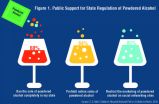(Press-News.org) GAINESVILLE, Fla. -- Aging can cause many changes to the body, including obesity and a loss of lean mass. Now, a group of University of Florida Health researchers has discovered that an existing drug reduces body fat and appetite in older rats, which has intriguing implications for aging humans.
Rapamycin, a pharmaceutical used to coat coronary stents and prevent transplant rejection, reduces obesity and preserves lean body mass when given intermittently to older rats. The two rapamycin-related studies were published recently in the Journal of Gerontology as a joint effort of two research teams.
With an elderly population that is expected to reach 73 million in the United States by 2030, developing anti-obesity treatments is critical, said Christy S. Carter, Ph.D., an assistant professor in the department of aging and geriatric research in the UF College of Medicine and co-lead author of one of the studies. While the current findings are limited to rats, rapamycin has potential as a treatment for age-related obesity because it is already used to treat other conditions in people.
"We need to be able to intervene with treatments for older adults. They're going to have health care issues, and not everyone can get up and exercise. So if you can give them a jump-start or combine rapamycin with other therapies, you could have better health outcomes," Carter said.
Obesity among older adults has increased dramatically in the United States during the last 20 years. More than one-third of people over age 65 are obese, according to a study published in 2012 by the Centers for Disease Control and Prevention.
Carter and Drake Morgan, Ph.D., an assistant professor in the department of psychiatry, are the co-lead authors of a paper that shows rapamycin reduced food consumption and body weight. Using 25-month-old rats, which are about equivalent to 65-year-old people, researchers found that body weight dropped by approximately 13 percent after the rats were treated with rapamycin.
The drug targets how the body makes leptin, a hormone produced by fat cells that affects hunger and metabolism. The researchers hypothesize that the reduction in eating is due to normalizing the typical age-related spike in leptin.
Rapamycin's ability to stabilize the rats' leptin level made them lighter, researchers found. Overall, there was a dramatic body metamorphosis: rapamycin selectively targeted the fat, allowing the animals to retain lean mass. It worked so well that the older rats ultimately developed a lean-to-fat ratio similar to that of their younger counterparts, researchers found.
"In this case, we feel like we restored the body composition to that of a young animal," Carter said.
In the second paper, researchers found that small, intermittent amounts of rapamycin produced the desired slimming effect in both young and old rats. That team included lead authors Philip J. Scarpace, Ph.D., a professor in the department of pharmacology, and Nihal Tümer, a professor in the department of pharmacology and a pharmacologist in the geriatric center at the Malcom Randall Veterans Affairs Medical Center in Gainesville. While rapamycin works best in older, obese rats, researchers were encouraged that it also had an effect on certain younger animals.
"One point that is common is that it seems to work better in animals, old or young, that have more fat," Scarpace said.
Getting the correct dose was crucial: Too little of the drug did not reduce obesity, but too much of it causes elevated glucose and fat levels in the blood.
Carter hit the sweet spot in the rats, picking just the right intermittent dose of rapamycin to deliver all of the benefits and none of the unwanted side effects, Scarpace said. The second paper determined that the drug works by inhibiting a signaling mechanism known as mTORC1, a protein complex that is an energy and nutrient sensor. This triggers a response in the brain that curbs eating, effectively reducing age-related fat until the older animals resemble much younger ones.
While rapamycin has yet to be tested in people, the rats were chosen carefully to resemble the aging and obesity pattern of humans, Carter said.
"We're looking at similarities in longevity, changing body composition and declining physical function -- and we're looking at the same trajectory of age-related obesity," she said.
Researchers remain unsure whether rapamycin is working in the brain or another part of the body. Next, Carter said she would like to study whether factors released by muscles play a role in fat metabolism.
INFORMATION:
The studies were supported by grants from the National Institutes of Health (DK091710 and P30AG028740) and the Medical Research Service of the Department of Veterans Affairs.
A simple way to turn carbon nanotubes into valuable graphene nanoribbons may be to grind them, according to research led by Rice University.
The trick, said Rice materials scientist Pulickel Ajayan, is to mix two types of chemically modified nanotubes. When they come into contact during grinding, they react and unzip, a process that until now has depended largely on reactions in harsh chemical solutions.
The research by Ajayan and his international collaborators appears in Nature Communications.
To be clear, Ajayan said, the new process is still a chemical reaction ...
The city where an individual lives can influence the risk of dying by suicide, according to a new study from sociologists at Rice University and the University of Colorado at Boulder.
"Suicide in the City: Do Characteristics of Place Really Influence Risk?" appears in the latest edition of Social Science Quarterly. The study found that adults living in cities with more socio-economic disadvantages and fewer families living together have higher odds of suicidal death than adults living in less-disadvantaged cities and cities with more families living together.
The findings ...
PHILADELPHIA (June 15, 2015) - Army ants, the nomadic swarming predators underfoot in the jungle, can take down a colony of prey animals without breaking a sweat. But certain army ant species can't take the heat.
According to a new study from Drexel University, underground species of army ants are much less tolerant of high temperatures than their aboveground relatives--and that difference in thermal tolerance could mean that many climate change models lack a key element of how animal physiology could affect responses to changing environments.
At face value, this is ...
Scientists at the University of Southampton have found a way to pry into the private lives of fish - by looking in their ears.
By studying ear stones in fish, which act as tiny data recorders, scientists can now reveal migration patterns and even provide insights into their sex life.
Managing fish stocks in a sustainable way is a major challenge facing scientists, conservationists, policy makers and fishermen. To get the best results, accurate information about the movements of fish in the wild is needed but gathering this information is extremely difficult.
Tiny ...
Daejeon, Republic of Korea, Jun 15, 2015 -- Phase change random access memory (PRAM) is one of the strongest candidates for next-generation nonvolatile memory for flexible and wearable electronics. In order to be used as a core memory for flexible devices, the most important issue is reducing high operating current. The effective solution is to decrease cell size in sub-micron region as in commercialized conventional PRAM. However, the scaling to nano-dimension on flexible substrates is extremely difficult due to soft nature and photolithographic limits on plastics, thus ...
From the adventures of Lara Croft in Tomb Raider to the apocalyptic drama of Fallout - new research from the University of Warwick has revealed the secret to how some of the world's most iconic video games were created.
Professor David Stark says it is because the creative teams behind these ground-breaking titles had the ideal mix of career backgrounds and working relationships.
He claims his research offers a fresh insight into the factors which
stimulate innovation - theories that can also apply away from the video gaming industry.
The 'Big Data' analysis looked ...
Humans are unlikely to be the only animal capable of self-awareness, a new study has shown.
Conducted by University of Warwick researchers, the study found that humans and other animals capable of mentally simulating environments require at least a primitive sense of self. The finding suggests that any animal that can simulate environments must have a form of self-awareness.
Often viewed as one of man's defining characteristics, the study strongly suggests that self-awareness is not unique to mankind and is instead likely to be common among animals.
The researchers, ...
Scientists from the Icahn School of Medicine at Mount Sinai have developed a new technique to more precisely analyze bacterial populations, to reveal epigenetic mechanisms that can drive virulence. The new methods hold the promise of a potent new tool to offset the growing challenge of antibiotic resistance by bacterial pathogens. The research was published today in the journal Nature Communications, and conducted in collaboration with New York University Langone Medical Center and Brigham and Women's Hospital of Harvard Medical School.
The information content of the ...
Scientists at Helmholtz Zentrum München have now discovered how Epstein-Barr virus (EBV) conceals itself in human cells. A main culprit for its bad visibility by the immune system is the viral protein LMP2A. As published in the scientific journal PLOS Pathogens, the protein helps EBV-infected cells hide from T cells. This camouflage through the LMP2A protein may play a major role in the causation of cancer by EBV.
„We suspected that a viral protein was behind EBV's camouflage in cancerous cells", says Dr. Andreas Moosmann from the Research Unit Gene Vectors ...
ANN ARBOR, Mich. -- After this year's legalization of powdered alcohol, some states have already banned it -- a move that the majority of the public supports, according to a new University of Michigan C.S. Mott Children's Hospital National Poll on Children's Health.
Adults across the country share the same top concern about the new alcohol-on-the-go product: potential misuse among underage youth.
Packaged in travel-friendly pouches, powdered alcohol will be available in flavors of distilled spirits like vodka and rum and also mixed drinks. One packet of powdered alcohol ...



